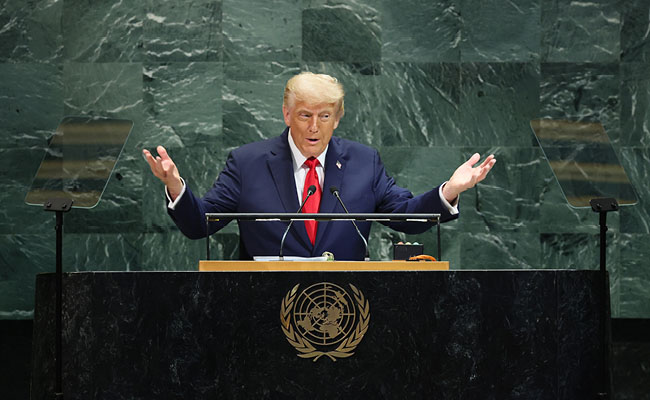We are embracing a new era of AI – but are we ready for its hidden environmental costs?
Few would argue that AI is redefining the way the world works, but how many of us have questioned the extensive demand for clean water this new trend brings?
Estimates from a 2023 study by the University of Colorado Riverside and the University of Texas Arlington show that for every 20 to 25 questions sent to an AI model, approximately 500ml of water is consumed – equal to a standard bottle of water or two cups of tea.
This is because every interaction we have with AI is supported by massive data centres that consume not only large amounts of energy, but also staggering volumes of water.
For a country like South Africa, which has experienced severe water shortages, this digital thirst feels particularly alarming. As it is, the national water and sanitation masterplan warns that the country could face a 17% supply deficit by 2030 if current trends continue.
AI could exacerbate this. In South Africa alone, the market for AI is expected to grow at a compound annual growth rate of more than 44% up to 2030, according to Statista projections.
There’s no denying that AI holds immense promise in areas such as education, health care and energy – but this comes at an invisible and growing environmental cost.
This raises questions about South Africa’s readiness for this new digital era, particularly the sustainability of our infrastructure, and how we will manage resources in the face of this change.
Digital leap, physical strain
Much of the hype around AI is about what it will do for economic progress. But the rapid growth of this technology depends heavily on data centres, something that South Africa is well placed to house. These data centres are essentially vast infrastructures that require enormous amounts of electricity and water to stay operational.
However, as water becomes increasingly scarce and expensive globally, technology companies are looking to developing countries like South Africa to house this infrastructure. The attraction is obvious: regulatory gaps and lower operational costs.
Yet this raises an uncomfortable question: who will bear this burden? Even when companies do actually acknowledge the environmental impacts of building and running data centres, the strain will likely fall hardest on communities already living in water-stressed areas. This risks compounding inequality and undermining sustainable development in areas that cannot afford it.
Some solutions have been proposed. One is to locate data centres in cooler climates and near abundant water sources, but for countries like South Africa – with soaring summer temperatures and limited water security – this would present a serious challenge.
Where the water goes
AI models like ChatGPT rely on data centres powered by graphics processing units, which generate intense heat and require constant cooling – often using water.
So how much water does AI use directly? Well, during the testing phase, GPT-3 consumed about 700,000l of clean water – enough to fill 280 household bathtubs. In 2022 alone, Google’s data centres used nearly 20-billion litres of fresh cooling water.
To complicate matters, servers require clean, high-quality water – recycled or desalinated water often isn’t suitable because impurities can corrode equipment and reduce performance. Even when recycling is used, the same water can typically only cycle 10 times before it becomes unusable.
As it is, South Africa’s coal-heavy electricity mix consumes vast amounts of water for steam and cooling. This means that every digital action in South Africa is more water-intensive than in countries that rely to a greater extent on renewable energy for their power.
Then there are the hidden water costs, from manufacturing chips and servers. And make no mistake, these are immense: Apple, for instance, estimates that 99% of its water footprint lies here, indicating how deep the water trail runs.
Juggling options
This picture underscores why clear regulations and transparency standards around AI’s water footprint must be established, along with measurable targets and accountability frameworks.
This could be done in a number of ways:
- Policy and regulation: mandatory water footprint disclosures for AI infrastructure should be introduced, establishing usage benchmarks.
- Sustainable infrastructure: policymakers ought to encourage the adoption of closed-loop water systems, AI-specific ESG screening and impact-linked investment models.
- Corporate accountability: companies operating in South Africa should partner with water resilience initiatives, such as the Sanlam Water Impact Initiative, to mitigate the impact for communities that will be affected.
- Public awareness: educating AI users, students and professionals about the true cost of innovation is critical. In this sense, awareness drives accountability.
- Strategic investment: invest in small businesses and community-based enterprises that contribute to water conservation and the maintenance of water infrastructure, from local leak detection services to water recycling innovations.
It is important to say that while AI is now in the spotlight, it is just one part of a much wider ecosystem of water-intensive sectors that require oversight, accountability and innovation.
Financial institutions can play a role in shaping how this plays out by developing impact-aligned investment vehicles, strengthening stewardship over resource-intensive sectors, and embedding transparency, regulation and resilience in all their investment decisions.
There is no way to stop the AI wave. But this must be matched by ensuring the infrastructure around it is resilient, equitable and climate-conscious. In a water-scarce country, the decisions made now will have implications for how sustainable the AI revolution will be for South Africa.
All of which underscores what is at stake: the future of intelligence must be water smart, environmentally just, and guided by values that will serve generations to come.
Mmagauta Patricia Mokoena is an ESG and Impact Graduate Trainee at Sanlam Investments.
Top image: Rawpixel/Currency collage.
Sign up to Currency’s weekly newsletters to receive your own bulletin of weekday news and weekend treats. Register here.














